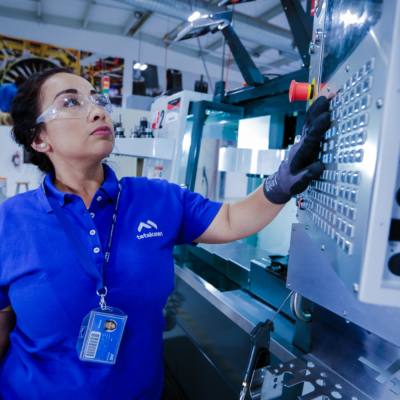Black Wall Streets beyond Tulsa refers to the historic Black communities across America that flourished economically in the early 20th century. While Tulsa’s Greenwood District is the most well-known, it was not the only place where Black entrepreneurship and self-sufficiency thrived.
Across the United States, Black neighborhoods and towns developed their own strong economies with Black-owned businesses, banks, and services. These communities represented hope and progress in an era dominated by segregation and racial discrimination. They also showed that given the opportunity, Black Americans could build thriving, self-sustaining communities.
What Were Black Wall Streets?
The term “Black Wall Street” was used to describe places where Black Americans created prosperous business districts, often out of necessity during segregation. These areas became hubs for Black professionals, shop owners, and working families who built wealth and community from within.
They were called Black Wall Streets because they mirrored the economic power of New York’s Wall Street—but were entirely Black-owned and operated. These communities had banks, schools, restaurants, beauty salons, insurance companies, and even hospitals. They showed what could be achieved when Black Americans were allowed to build freely, despite facing barriers from the wider society.

Why Tulsa Became the Most Famous
Tulsa’s Greenwood District earned the nickname “Black Wall Street” in the early 1900s. It had more than 600 Black-owned businesses and was considered one of the wealthiest Black communities in the United States.
But in 1921, a white mob attacked Greenwood in one of the worst acts of racial violence in U.S. history. Hundreds were killed, and most of the community was destroyed in what became known as the Tulsa Race Massacre. While Greenwood eventually rebuilt, the tragedy put Tulsa at the center of national conversations about race and Black economic power.
Though it is the most famous, Tulsa was just one of many places where Black economic life flourished.
Other Black Wall Streets Beyond Tulsa
Several communities across the U.S. had similar levels of prosperity and independence. These Black Wall Streets show the strength and creativity of Black Americans in building wealth, jobs, and opportunity during deeply unequal times.
Durham, North Carolina – The Wall Street of the South
Durham’s Parrish Street was once known as the “Black Wall Street of the South.” It was home to several major Black-owned businesses, including banks, insurance companies, and law offices.
North Carolina Mutual Life Insurance Company, founded in 1898, became the largest Black-owned insurance firm in the country. Mechanics and Farmers Bank, started in 1907, offered loans and banking services to the Black community when white-owned banks refused.
Durham’s Black middle class thrived, and the area became a model for Black entrepreneurship and community support. It wasn’t just about money—it was about pride, progress, and unity.
Rosewood, Florida – A Town Built on Independence
Rosewood was a small, primarily Black town in Florida that had developed into a self-sustaining community by the early 1900s. Residents owned land, businesses, and homes, and worked in skilled trades and farming.
In 1923, after a false accusation against a Black man, a white mob destroyed the entire town in a racially motivated attack. The violence wiped out years of hard work, but the memory of Rosewood remains an important symbol of Black independence and the risks that came with it.
Rosewood’s story is often overshadowed, but it was once a vibrant and successful Black Wall Street in its own right.
Houston, Texas – Fifth Ward and Freedmen’s Town
In Houston, the Fifth Ward and Freedmen’s Town were areas where Black residents built strong communities after emancipation. The Fifth Ward was filled with Black-owned businesses, churches, schools, and cultural centers.
These neighborhoods thrived during the segregation era and served as safe spaces for Black people to live and work. Grocery stores, nightclubs, beauty salons, and even newspapers helped keep money circulating within the community.
Though gentrification and urban development have changed these areas, their history as economic and cultural hubs remains important.
Atlanta, Georgia – Auburn Avenue
Auburn Avenue in Atlanta was known as “the richest Negro street in the world” during the 20th century. It was a cultural and economic center, home to Black-owned businesses, civil rights organizations, and major figures like Dr. Martin Luther King Jr.
Citizens Trust Bank, founded in 1921, was one of the first Black-owned banks in Atlanta and still exists today. The street bustled with activity, and it became a symbol of what was possible through unity and hard work.
Auburn Avenue continues to be a historic district and cultural landmark, celebrating its roots as a Black Wall Street.
What Made These Communities Thrive?
Several factors helped Black Wall Streets develop across the country, even during times of segregation and racism.
- Community support: Residents shopped at local Black businesses and reinvested in their neighborhoods.
- Entrepreneurial spirit: Many Black Americans started businesses to serve the needs of their own communities.
- Limited access elsewhere: Segregation made it difficult to use white-owned services, so Black communities created their own.
- Education and skills: These communities often prioritized education, producing skilled workers and professionals.
- Shared goals: There was a sense of collective mission—to build something lasting despite the odds.

What Challenges Did They Face?
Despite their success, Black Wall Streets were often targeted by racist policies and violence. Some of the major challenges included:
- Racial violence: As seen in Tulsa and Rosewood, white mobs sometimes attacked Black communities out of fear and hatred.
- Discrimination in finance: Many Black entrepreneurs struggled to get loans or access capital due to racial bias.
- Urban renewal: In the mid-20th century, many Black neighborhoods were destroyed or displaced by highway construction and redevelopment.
- Lack of government support: Unlike white-owned areas, Black communities rarely received public funding for infrastructure or development.
Even with these challenges, the communities continued to build and adapt.
The Legacy of Black Wall Streets Today
Today, the legacy of Black Wall Streets beyond Tulsa lives on in many ways. Some of the original businesses still exist, while others have inspired new generations of entrepreneurs.
In places like Durham and Atlanta, efforts are being made to preserve historic buildings and educate the public about these important chapters of American history. Across the country, new initiatives are working to revive Black economic centers and support Black-owned businesses.
These stories matter because they highlight what Black communities can achieve with access, opportunity, and unity. They also serve as a reminder that economic justice is a key part of racial equality.
Conclusion
Black Wall Streets beyond Tulsa were powerful examples of economic strength and community pride. From Durham to Rosewood to Houston, these places proved that Black Americans could thrive even when the system was stacked against them.
Their stories are not just history—they are lessons in resilience, creativity, and the importance of building something of our own. As we remember these Black Wall Streets, we also look to the future, carrying forward their vision of economic empowerment and self-determination.
Do Follow USA Glory On Instagram
Read Next – Security and Civil Liberties: A Delicate Balance at Risk






